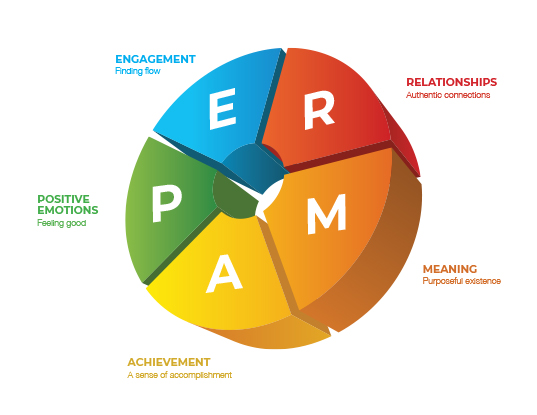By Declan Noone
A leader, as Parker Palmer states, can ‘either shine a light or cast a shadow’. Appreciating that you, both as an individual and as a leader have a direct effect on your immediate environment (personal context), as well as on your surrounding work environment (working context), is an important stage of self-awareness as a positive and mindful leader.
What to do next, is the challenge. Well, it’s important to develop an understanding of human flourishing and it is a key influencer in setting the right context for performance and building a flourishing team.
Comprehending the model of well-being (PERMA) put forth by a pioneer in the field of positive psychology, Martin Seligman, and examining how it can be applied to the human challenges in the workplace will enable a leader to:
- Identify what tools and techniques can be used to set a positive context for performance and team building.
- Create a constructive and generative work culture.
From a workplace perspective, each component of the PERMA model can be explained as follows:
Positive Emotions: How to create a space both from a physical and time perspective, that enables self-reflection, the sharing of experiences and knowledge, a sense of belonging and connectedness to individuals, the team, and the organisation. Allowing for a greater frequency of positive emotions would help facilitate a change in mind-set, as well as fostering greater levels of trust, collaboration and oneness.
Engagement: How to afford all participants the opportunity to fully engage in the direction the team wants to go, connecting it with their own and the organisation’s purpose, building on their self-communicated strengths, and creating an open dialogue which would enable the building of a generative environment, where all have a voice and input into driving solutions. This would in turn generate greater collaboration and a sense of a ‘One Team’ culture.
Relationships: How to move beyond the job titles they each had and identify the individual, the human. The success or otherwise of the team would be partly fuelled by the strength and dynamic of their team relationships. Creating a connection beyond the role they filled would encourage greater connectedness, a desire to support and encourage each other, and a willingness to go ‘the extra mile’ for each other.
Meaning: How to fuse the purpose of one with that of the team, and in turn with the purpose of the organisation. Meaning would move beyond ‘What is my role?’ to ‘How can I add value?’ while feeling challenged and having a sense of belonging to a common cause.
Achievement: How to recognise where the successes are and why. Appreciating that the success of the individual feeds the success of the team. Identifying what the collective targets are, what the implications are for each individual, how through supporting each other each success adds to the momentum of change and creating value.
These 5 elements are building one of the foundations of the positive leadership concept and help us develop tools and frameworks like Appreciative Inquiry, SCOC and Design Thinking that encapsulate these principles.

